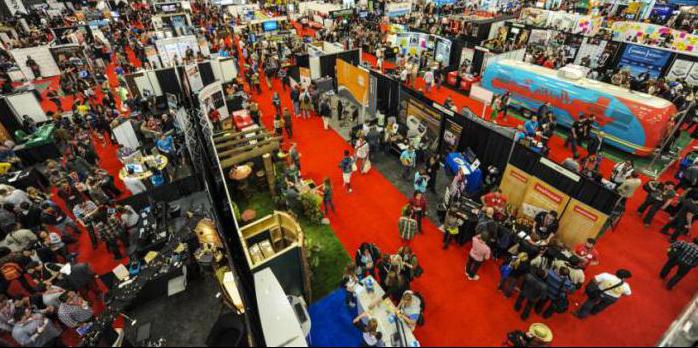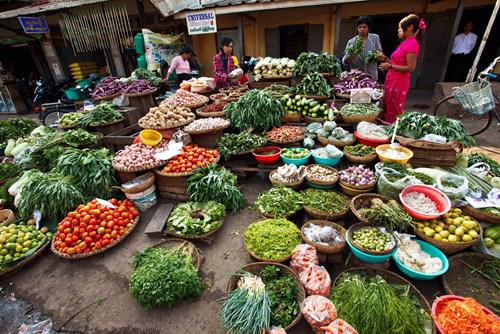Today, retail business should be understood as a kind of economic activity in the field of trade related to the sale of marketable products directly to the consumer for domestic, personal, home, family use. That is how the concept is defined by modern legislation. The article describes in detail the varieties of the given type of trade, retail trade in non-specialized stores (OKVED) and other equally important aspects of the activity relevant to the materials of the article.

General Provisions
To begin with, it should be noted that the legal nature of retail commerce as a type of economic activity is expressed primarily in the contractual nature. So, in accordance with article 492 of the Civil Code of the Russian Federation, under an official contract for the sale of commodity products in retail, a seller engaged in entrepreneurial activities for the sale of goods (in small quantities or individually), in one way or another, is obligated to transfer to the direct buyer the product intended for family, personal, home or other use not related in any way to economic activity. In turn, the buyer agrees to accept this product and, of course, pay for it in accordance with the price announced by the seller.
Thus, it is advisable to interpret retail business as the factual relationship that appears between the buyer and seller in the process of transferring and subsequent payment for marketable products. Indispensably, the above operations serve as the central links in retail trade as varieties of economic activity (however, they are not the only ones).
Before acquiring the seller’s status, the entity undertakes to carry out a number of specific actions of legal significance in order to become recognized as such by local authorities or state authorities. It is important to note that this is primarily expressed in the registration of an individual entrepreneur or legal entity, as well as in obtaining special permits and licenses related to the implementation of this type of economic activity. Here, one way or another, the Russian administrative legislation is now taking the main positions, because it is through its acts that the state can exercise regulatory and control functions. Thus, the legal nature of the category in question is determined by the standards of administrative and civil law.

Types of Retail
It is important to know that the traditional basis for classifying retail trade into certain types in acts of relevant legislation is the place of customer service in the trading plan. For this reason, it is customary to distinguish the following categories:
- Product implementation by the location of the outlet.
- Product sales at customer’s location.
You need to know that the first type of retail trade in the Russian Federation is traditional. What should be understood as a point of sale? Indeed, in the current legislation there are no clear formulations on this subject. Nevertheless, a retail facility is nothing more than a property complex that is used by the seller to implement an idea related to retail trade.The considered type of trade would be appropriate to classify into street and store. The definition of the latter, one way or another, boils down to the fact that this is the sale of marketable products to direct customers in the store. Street trading is nothing more than the sale of a marketable product in kiosks and tents in territories specially designated for the purpose presented and with competently allocated places. In addition, today often used means of distribution (baskets, trays) and distribution (grocery) trade.
In the case of trade at the buyer's location, linking to the direct place of transfer of the commodity products, and not to the place of execution of the retail sale contract, is relevant. It is important to supplement that the presented variety is carried out in several forms, among which the following points:
- Television commerce.
- Direct sale of marketable products at the home of the buyer.
- Commerce through catalogs, booklets and brochures.
- E-commerce.
In subsequent chapters, it will be appropriate to consider retail trade (OKVED) and learn its fundamental principles.

OKVED trade
In the process of registering entrepreneurial activity, special OKVED codes must be indicated in the application for registration. OKVED retail codes provide for various types of activities that an individual entrepreneur or legal entity plans to engage in. It is important to note that since 2016 these codes are indicated in accordance with the new classifier - OK 029-2014. It would be advisable to consider in a detailed manner OKVED. Retail sales in non-specialized stores is determined by the following points:
- Commerce, mostly related to food. This should also include tobacco products and drinks.
- Commerce related to frozen products.
- Commerce related to unfrozen products, including tobacco products and drinks.
- Other retail trade.
Retail trade in terms of food products, including tobacco products and drinks, in specialized stores can be classified in accordance with the following points:
- Commerce related to canned poultry and meat.
- Commerce related to poultry and meat products.
- Retail sale of fruit and vegetables and potatoes (OKVED 52.21).
- Commerce related to seafood and fish.
- Commerce related to crustaceans, mollusks and fish.
- Retail trade of poultry, meat, canned goods and poultry and meat products.
- Commerce related to poultry and meat, including offal.
- Commerce related to canned seafood and fish.

Retail Classification
According to OKVED, retail trade in confectionery and bakery products, as well as bread, is classified in accordance with the following components:
- Confectionery sales.
- Sale of bakery products and bread.
- Sale of confectionery products of flour origin.
- Sale of frozen desserts and ice cream.
- Sugar confectionery sales, including chocolate.
Retail trade in alcohol and other beverages includes the following items:
- Sale of alcoholic beverages, where beer would be appropriate.
- Sale of alcoholic beverages other than beer.
- New OKVED: retail trade in beer.
- Sale of tobacco products.
- Sale of soft drinks.
According to OKVED 52 (1) other retail sale of food products in specialized stores includes:
- The sale of eggs and dairy products.
- The sale of dairy products.
- The sale of eggs.
- The sale of edible fats and oils.
- The sale of animal fats and oils.
- The sale of vegetable oils.
OKVED retail in terms of other food products involves the following items:
- Commerce related to pasta and flour.
- Commerce related to cereals.
- Commerce related to canned vegetables, fruits and nuts.
- Commerce related to cocoa, coffee, tea.
- Sugar related commerce.
- Commerce related to salt.
- Commerce related to other food products that are not included in other groups.

Retail sale of non-food goods
It is important to note that the sale of medical and pharmaceutical products, as well as perfumery and cosmetic products for retail, includes the following elements:
- Trade in pharmaceutical products.
- Orthopedic products and medical supplies.
- Trade in perfumes and cosmetics (the exception is soap).
- Perfume and cosmetic products.
- Trade in household and toilet soap.
Retail trade (code OKVED 52) in specialized nature stores includes the following components:
- Sale of haberdashery and textile products.
- Sale of textile products.
- Sale of haberdashery products.
Clothing retail involves the following items, which are gaining increasing popularity today:
- Children's, women's and men's clothing.
- Underwear.
- Fur products (fur clothing).
- Leather products (leather clothes).
- Sportswear.
- Hosiery products.
- Hats.
- A variety of accessories, including ties, scarves, gloves, suspenders, belts and so on.
Retail trade (OKVED 2 code 47.72) of leather goods and footwear involves the following components:
- Trade in leather goods and travel accessories.
- Footwear trade.
Household goods trade
Retail trade (OKVED code 47) for household products and furniture today includes the following components:
- Commerce in terms of furniture.
- Trade in various household utensils, tableware, cutlery, ceramic and glass products, where faience and porcelain will also be appropriate.
- Commerce in terms of fixtures.
- Trade in tulle curtains, drapes and other household items made from textile materials.
- Commerce in terms of wickerwork, cork, and wood products.
- Trade in appliances and household goods that do not belong to other groups.
Retail trade (OKVED 2 code 46.43) of television and radio equipment, as well as household electrical appliances, is classified into the following components:
- Trade in electrical goods for household use.
- The sale of television and radio equipment, which includes the sale of video and audio equipment, technical media of various information (both with and without recordings), as well as the sale of music and musical instruments.
It is important to know that the sale of paints and varnishes, hardware, and also materials for glazing at retail implies the following classification:
- Realization of varnishes, paints and enamels.
- Sale of hardware.
- Realization of glazing materials.
- Sale of equipment and materials for the manufacture of various crafts.
- Implementation of sanitary equipment.
- Sale of garden tools and equipment.

What else?
Retail construction materials involves the following classification:
- Brick trading.
- Timber.
- Trade in non-metal and metal structures.
Retail trade of magazines, newspapers, books, office supplies and stationery is classified in accordance with the following points:
- Trade in magazines and newspapers.
- Books.
- Stationery and stationery trade.
It is important to note that other retail trade directly in specialized stores also takes place, however, it is not divided into subgroups. But specialized trade in office equipment, office furniture, photographic equipment, as well as optical and computer devices is determined by the following elements:
- Commerce related to office furniture.
- Commerce related to office equipment and machines.
- Commerce related to software, computers and peripherals.
- Commerce related to precision and optical instruments, as well as photographic equipment.
- Commerce related to telecommunication equipment.
In addition to the points mentioned above, it is important to recall the specialized retail trade in jewelry, watches, toys and sports goods, which includes the following components in its structure:
- Watch trade.
- Jewelry items of nature.
- Trade in sporting goods, camping equipment, fishing equipment, as well as bicycles and boats.
- Toys and educational games for children and adults.
Non-food products
At present, specialized retail trade in non-food commodity products, which are not included in other groups, at retail implies the following classification:
- Commerce related to marketable household products, flooring and wallpaper, synthetic detergents for washing various surfaces and so on.
- Commerce related to fertilizers and seeds, as well as flowers and other plants.
- Commerce related to pets, as well as food for them.
- Commerce related to souvenirs, religious and cultural items, handicrafts, accessories for organizing funerals and so on.
- Commerce related to gas in cylinders, boiler liquid fuel for household use, fuel peat, coal, wood fuel.
- Commerce associated with philatelic and numismatic commercial products.
- Commerce related to works of art in commercial type galleries.
- Commerce related to pyrotechnic products.
- Specialized retail trade in those commodity products that are endowed with non-food value, but are not included in the existing groups today.
Previously used commercial products
In addition to the groupings given in previous chapters, it would be advisable to note the retail sale of second-hand marketed products in stores, usually of a specialized purpose. In this case, it is important to note the following points:
- Trade in second-hand commodity products in stores.
- Trade in antiques.
- Second-hand book trade.
- Trade in other previously used goods.
The final group that needs to be highlighted is retail trade outside of stores. It is advisable to present the following components:
- Retail according to orders.
- Retail parcel (postal) trade.
- Retail trade, which is carried out through television shops and computer networks (a vivid example here is electronic commerce, including the Internet).
- Retail trade in markets and in separate tents.
- Other retail trade carried out outside stores.

Functional aspect of retail
In the final chapter, it will be advisable to note the main functions of retail trade, because the factor providing for a certain place of this category not only in the market, but also in society is important.Today, various sources highlight a considerable number of functional links in retail, which, one way or another, play a specific role, both for creating demand and for the progressive development of the sales market. It is important to note that all the functions of this category are classified in accordance with three types according to factors of influence on those or other segments that are included in this activity. To begin with, it is necessary to highlight the functions that bring some benefit to the state as a whole:
- Attracting investments of foreign origin. It should be added that due to the very active promotion of retail trade, the Russian Federation has consistently taken the first lines in attractiveness ratings in terms of foreign capital investments.
- Substantial development of infrastructure at the regional level. Invading the market of the Russian Federation, network retailers want to cover the largest number of cities of regional significance as soon as possible.
In addition to the above points, it is important to highlight the functions of retail, which play a role for consumers of marketable products:
- Absolute satisfaction of the needs of society in marketable products, both food and household. It is important to note that retail is nothing more than the final link, where the consumer has the opportunity to purchase a specific product. Thus, it closes on itself a very long chain of economic ties in the process of moving a marketable product from a producer to a direct consumer.
- Informing customers about marketable products that periodically appear on store windows.
Among the functions that play an exclusive role for producers, the following elements should be noted:
- Bringing marketable products to consumers through the provision of freight forwarding plan services.
- The implementation of a marketable product purchased from a particular manufacturer.
- Pricing of marketable products.
- Establishment of supply and demand for a specific commodity product or its variety.
- Impact on the production process to increase labor productivity on the part of manufacturing companies.
- Providing analytical information about consumers received, for example, in the process of carrying out certain marketing research.
Thus, retail, one way or another, has a whole range of functions that are important for various participants in the interaction of the purchase and sale process, which is defined as market.